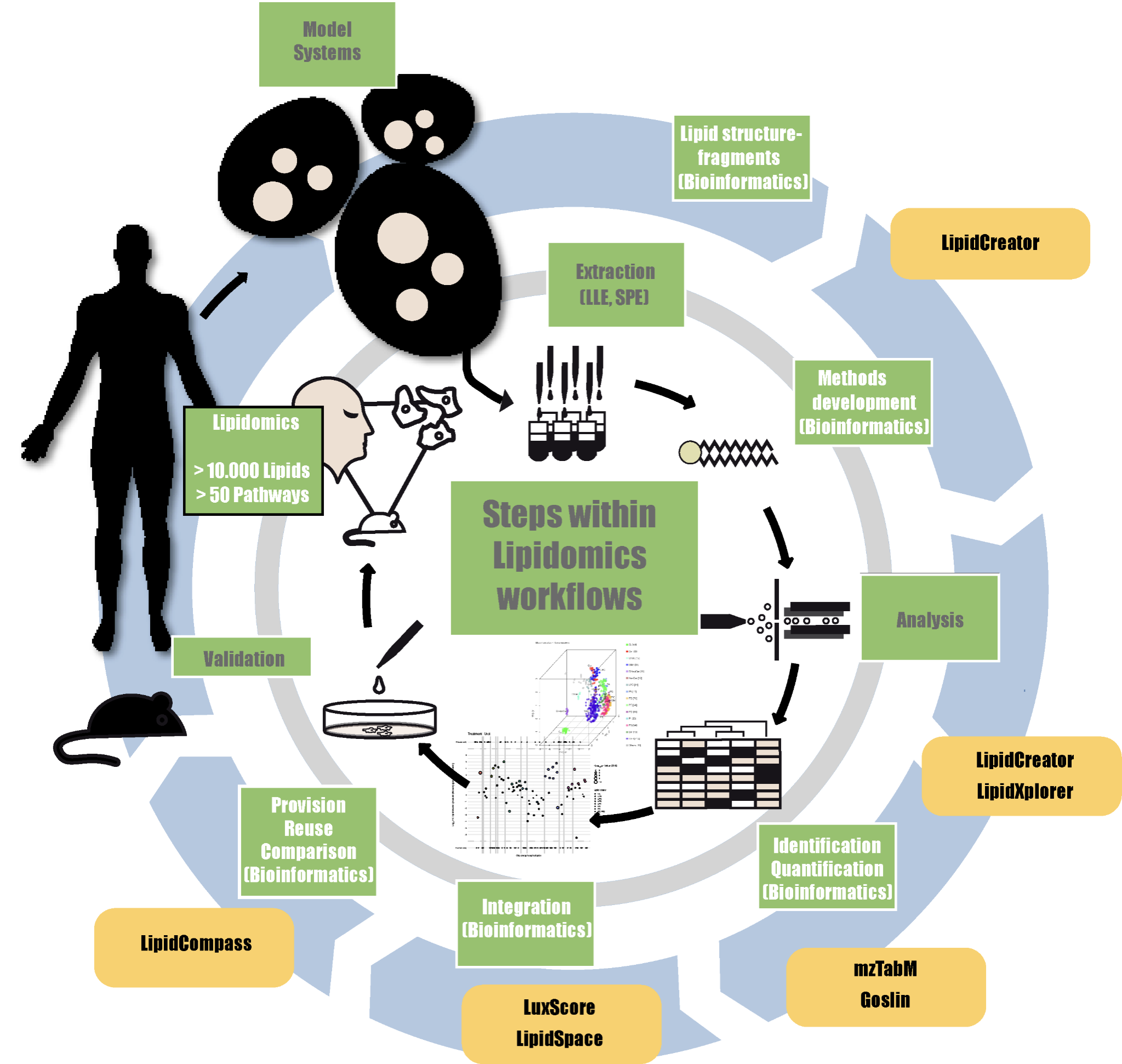For far too long, lipids have been the unsung heroes in the epic saga of biology. Despite making up over 10% of our bodies, lipids took a backseat in the scientific limelight. However, the tides are turning, and a quiet revolution is underway, with the Lipidomics Informatics for Life Sciences (LIFS) toolkit at the forefront.

Lipids: More Than Just Energy Reservoirs
Picture this: lipids, those unassuming molecules, are not just passive energy reserves or mere cellular barriers. They're the conductors in the symphony of cellular regulation. In the last decade, a scientific awakening has unfolded, revealing that lipids aren't just crucial for energy balance and environmental defense; they're also the inconspicuous heroes in our cellular communication network.
Lipids in the Spotlight of Disease
As evidence mounts, it's becoming crystal clear that disruptions in lipid metabolism are not to be taken lightly. They're the culprits behind the scenes in conditions like thrombocytopenia, metabolic syndrome, diabetes, obesity, and hyperlipidemia. The latter, in particular, has reached pandemic proportions. It's no wonder that lipid metabolism is stepping into the limelight as a pivotal player in pharmacological research, influencing the development of drugs like statins, cyclooxygenase inhibitors, and even substances like endurobol in doping.
Lipidomics: Beyond the Microscope
Lipidomics, a relatively young discipline with a long and often overlooked ancestry, aims to identify and quantify the complete set of lipids—the lipidome—in cells, tissues, or organisms. Mass spectrometry takes center stage in this analytical approach, proving to be a powerful tool in system biology alongside other 'Omics' disciplines. However, the road for lipidomics isn't without its challenges, especially in the realm of bioinformatics.
LIFS Tools: Navigating the Lipidomic Landscape
Here's where LIFS as part of the 'German Network for Bioinformatics' (de.NBI) shines. The toolkit is a treasure trove of specialized bioinformatics pipelines, covering everything from services and search engines to quantification algorithms and visualization tools. Hosted via the LIFS portal, these resources provide scientists and researchers with broad access to the intricate world of lipidomics.
From LipidCreator to LipidSpace: Tools at Your Fingertips
LIFS boasts an arsenal of software tools, each playing a unique role in deciphering the lipidomic code:
- LipidCreator*: Designing assays and generating libraries for targeted lipidomics, seamlessly integrated with Skyline.
- LipidXplorer*: A powerhouse for shotgun lipidomics, specializing in identification and quantification.
- LUX Score*: Qualitative lipidome comparison, measuring structural homology akin to genetic analyses.
- Goslin: The grammar guru for lipid names, making sure everything is in order with hierarchical lipid shorthand nomenclature.
- LipidSpace: A standalone tool employing graph-based algorithms to analyze and compare lipidomes by assessing structural differences.
- and many more tools that you can check out on our web site.
*official de.NBI tools
Unlocking the Lipidomic Secrets
In essence, LIFS isn't just a toolkit; it's a scientific ally, unraveling the secrets encoded in lipids. With a commitment to capacity building, LIFS provides the necessary tools to understand the molecular intricacies of lipid-related dysfunctions. As a member of de.NBI and the Lipidomics Standard Initiative (LSI), LIFS not only offers access to cutting-edge software but also provides tutorials and consulting services, making lipidomics research more accessible than ever. As part of the annual Lipidomics Forum conference, the LIFS tools training provides hands-on experience with our tools, brought to you by the team who developed the tools.
So, whether you're a seasoned scientist or a curious mind eager to dive into the lipidomic frontier, LIFS is your guide. Let the lipidomic revolution begin!
